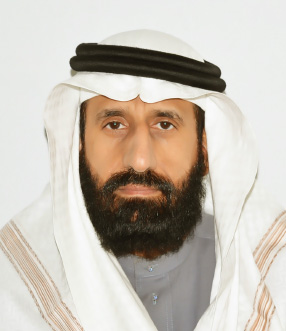Mr. Abdullah is currently Sr. Manager of Industrial Security Department in National Petrochemical Industrial Company NATPET heading the functions Safety, Health, Environment, Fire protection, Process safety and Security. He has high diploma in technical engineering from UK, international diploma in safety management from British Safety Council. He has 35+ years of Industrial experience and involved in various projects and improvements in his field. Also, he is one of the active members in various institutions such as National Fire Protection Association NFPA (since 2007), American Society of Safety Engineers ASSE (since 2001) and International Institute of Risk and Safety Management UK (since December 2002) and also EX-member in SABIC HSE committee (since April 2002).
Abdullah Al Zahrani
Presentation Abstract:
The industrial revolution that has changed the landscape of the ecosystem has contributed significantly to the irreversible state of the environment. Hydrocarbon emissions regulated or not, have depleted the ozone layer that protects the planet from the harmful effects of the ultraviolet rays from the sun. Indeed, when one looks at the situation, disasters are here to stay.
New emerging risks such as climate change, terrorism, pandemics, and Cyber Crimes are pushing the safety professionals’ limits of knowledge to find solutions to avert disasters. The traditional approaches on safety and loss control management are not enough to solve current risk issues affecting business enterprises and organizations. In addition, sadly, the safety practice in many countries and even in this region seems not coping up.
Many of our colleagues have not shifted paradigms and are stuck on traditional practices. Disaster planning has long been focused on emergency preparedness. Examples of the responses that have been developed include those pertaining to vapor explosions, bursting of large pipes, pressure vessel implosions, and the like. The reality is those who have experienced these incidents have had difficulty in recovering its business. The reason is planning has been limited to responses to the actual incident and never went beyond that. Safety professionals have never dwelt on business continuity and resiliency. Most of the Risk Managers and Chief Risk Officers who reports to the Board of Directors have gained a head start in this field while our colleagues have remain in the plant arena. The Safety Officer and his Safety Committee languishes in the operations arena, struggling to get the safety rules and regulations complied with, conducting fire and emergency drills, and doing accident reports.
This paper attempts to stir consciousness among safety professionals and practitioner to shift paradigms, be at the forefront of the business, and assert its leadership role in the field of Disaster Planning. Not to outdo our fellow risk management professionals, this paper merely points to the fact the risk and safety management cannot be separate disciplines and should exist in harmony if not as one entity whenever and wherever warranted by the organization.
Presenter Bio:
Details
Presenter Photo

- Natpet
- Sr. Manager of Industrial Security Department
- 26 January 2023
- Start: 10:05 am
- End: 10:25 am
- Al Dana 1 - Gulf Hotel